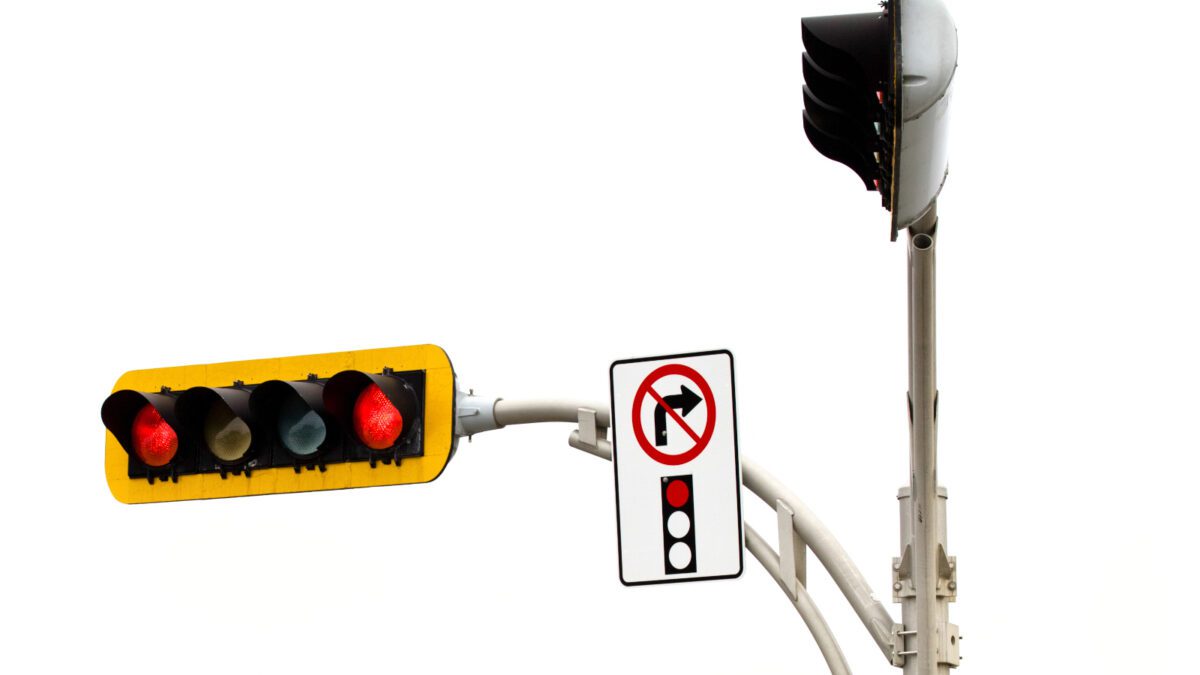Several cities are considering copying Montreal’s ‘no turn on right’ policy to protect cyclists
Traffic advocates favour ban, but need more reliable data

To address the rising concern of pedestrian and cyclist fatalities, numerous North American cities are considering adopting a strategy reminiscent of Montreal’s approach: prohibiting right turns on red lights for drivers. However, despite multiple discussions over the years, proponents of this traffic safety measure acknowledge a notable absence of conclusive data substantiating its efficacy in enhancing overall safety.
The director of road safety and safe mobility programs at the injury prevention group Parachute, Valerie Smith said the change would be beneficial to vulnerable road users such as pedestrians and cyclists.
“When I consider the potential opportunities for collisions, for serious injuries resulting from those collisions or deaths, I think that it really makes sense to strongly consider a ban on right turns on red,” she said in a phone interview with Global News.
Currently, Montreal is the only large city in North America that bans right turns on red lights. It used to be that the entire province prohibited it, but that rule changed in 2003, making the Island of MTL the only place left where it was disallowed. In New York City, there are some places that ban it as well. The city of Toronto has also considered such a ban several times as well. In 2020, city councillor Mike Layton floated the idea to, “proactively use right-turns-on-red prohibitions to make roads safer for pedestrians and cyclists.
According to a recent report by The Associated Press, several other cities have taken steps towards limiting or are currently engaged in discussions about restricting the right turn on red maneuver. Notable examples include Washington, D.C., Chicago, and Ann Arbor, Mich., where authorities are actively deliberating on the potential implementation of such measures. This growing trend underscores a broader effort among urban centres to address traffic safety concerns and explore innovative solutions to mitigate pedestrian and cyclist risks.
In 2016, the mayors representing 15 suburban municipalities in Montreal mounted an unsuccessful lobbying effort to eliminate the existing ban. Their rationale centered on the decline in road fatalities within their jurisdictions, asserting that Quebec motorists displayed no greater level of risk compared to their counterparts in other North American regions. Despite their advocacy, the proposed change did not come to fruition.
According to the Global News report, Nicolas Saunier, who is a civil engineering professor at Polytechnique Montréal, said it’s “not clear whether right-on-red bans are statistically safer in preventing pedestrian and cyclist injuries and deaths.”
Advocates for road safety, including the pedestrian advocacy group Pietons Québec, contend that permitting right turns on red lights contributes to fatalities. After the province legalized turning right on red outside the island of Montreal this decision resulted in seven pedestrian fatalities and37 severe injuries between 2003 and 2015. Advocates emphasize that numerous drivers neglect the stipulated rule of coming to a complete stop before executing the turn, and they highlight the heightened risks posed by larger vehicles like SUVs to pedestrians.
Saunier and Smith both assert that the absence of up-to-date and thorough studies on the safety implications of right turns on red lights poses a significant obstacle for cities contemplating the adoption of new regulations. “There have to be a lot of factors that come together to produce an accident, so it fluctuates a lot,” Saunier said.
“While we believe it makes sense to implement the no-right-turn-on-red ban, and we know that it’s going to protect the vulnerable road user, we want data to support that,” Smith added. “Does that blanket ban make sense from a vulnerable road user perspective? I would say yes. But for a city planner who’s trying to meet the needs of a variety of constituents, it’s going to be a little bit more challenging.”
